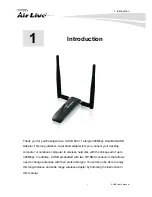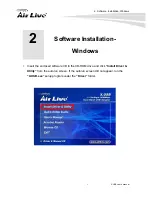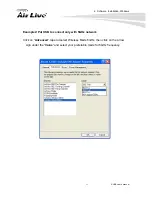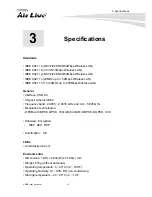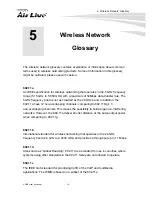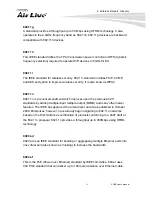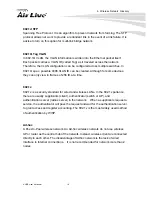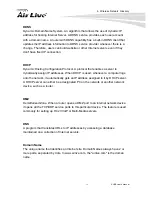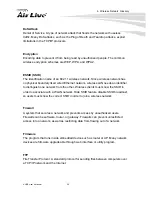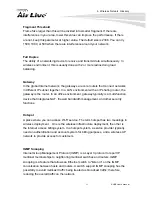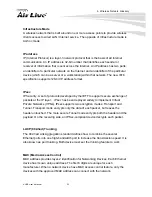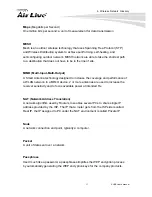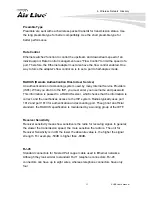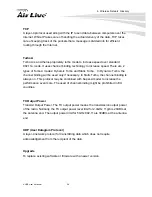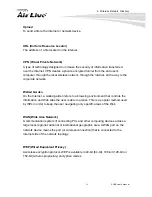
5. Wireless Network Glossary
X.USB
User’s Manual
14
5
5.
Wireless Network
Glossary
The wireless network glossary contains explanation or information about common
terms used in wireless networking products. Some of information in this glossary
might be outdated, please use with caution.
802.11a
An IEEE specification for wireless networking that operates in the 5 GHz frequency
range (5.15 GHz to 5.850 GHz) with a maximum of 54Mbps data transfer rate. The
5GHz frequency band is not as crowded as the 2.4GHz band. In addition, the
802.11a have 12 non-overlapping channels, comparing to 802.11b/g's 3
non-overlapping channels. This means the possibility to build larger non-interfering
networks. However, the 802.11a deliver shorter distance at the same output power
when comparing to 802.11g.
802.11b
International standard for wireless networking that operates in the 2.4GHz
frequency band (2.4 GHz to 2.4835 GHz) and provides a throughput up to 11 Mbps.
802.11d
Also known as “Global Roaming”. 802.11d is a standard for use in countries where
systems using other standards in the 802.11 family are not allowed to operate.
802.11e
The IEEE QoS standard for prioritizing traffic of the VoIP and multimedia
applications. The WMM is based on a subset of the 802.11e.


